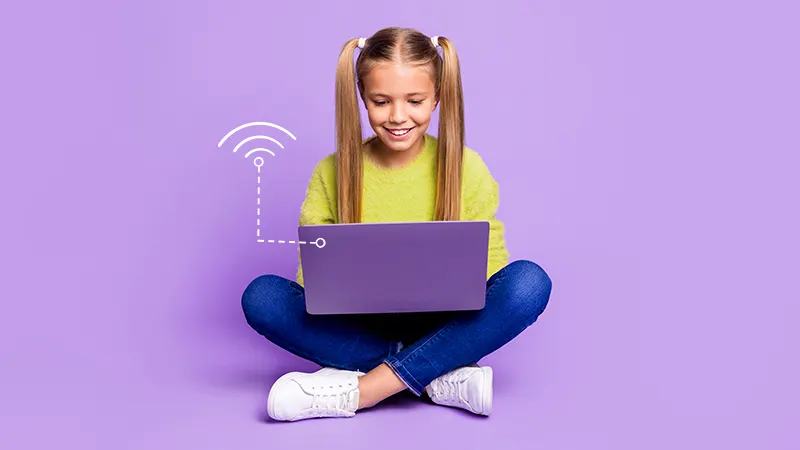Hotspots for students: what are they and how to use them for remote learning

Hotspots, Wi-Fi and remote learning: not exactly the education lingo we're used to, right? With homeschooling becoming more common during the time of COVID-19, reliable home internet access for students has become more of a necessity than ever before. To help bridge the technology gap faced by a lot of children (14% of U.S. students ages 3-18 are shown to not have internet at home), many school districts are turning to hotspots to help make online learning more accessible to all.
Understanding the tools the student or students in your life need to be successful is important (like which is better for them—a laptop or a tablet?). Asurion Experts have helped millions of customers unlock the full potential of their technology, and we're here for parents to help them understand all of the tech in this new remote learning world.
What is a hotspot and how does a hotspot work?
To put it simply, a Wi-Fi hotspot is a physical access point that allows you to wirelessly connect to the internet using your smartphone, laptop, tablet or other smart device. A hotspot can be public or private. If you're at a coffee shop, hotel or airport, for example, and connecting to the Wi-Fi provided, you're accessing a public hotspot created by that establishment's router connected to an internet service provider.
Is it safe to use internet from public Wi-Fi hotspots?
While certainly convenient—and often free—you should be aware that using public Wi-Fi can create certain security risks and often requires you to give out personal information, like your email address, in order to connect. (Check out our 6 tips for using public Wi-Fi safely). You also have the option to use your smartphone's mobile hotspot capability to put extra security measures in place to help protect you and your private information.
For students, accessing popular virtual learning tools like Google Classroom can only be done online, so an internet connection of some sort is a must. Luckily, mobile hotspots or portable hotspots can help you to get online for remote learning no matter where you are.

Don’t waste time scrolling
Life is short. Ask our experts and get answers now.
Setting up mobile and portable Wi-Fi hotspots
If you don't have internet access at home, or you just need to be able to get online while on the go, there are two ways that you can create your own private hotspot. One is through the built-in capabilities on your smartphone; the other is through a portable hotspot device you can get through your wireless carriers, like AT&T or Verizon.
We'll walk you through both options, but there's one important thing to note upfront: both use cellular data to connect to the internet and additional charges may apply.
How to turn on hotspot on iPhone
- Tap Settings, then Personal Hotspot.
- Toggle on Personal Hotspot. Then, tap Wi-Fi Password to change the password for your shared network.
- Connect your computer to your phone's internet. Tap your preferred way to connect below.
Note: Your iCloud devices will be able to use it automatically
How to turn your Android phone into a mobile hotspot
- Click on Settings, then Connections.
- Then, click on Mobile Hotspot and Tethering.
- Toggle Mobile Hotspot to On.
- Once toggled on, click on Mobile Hotspot again and scroll down to Password. Here, you can change the password to something difficult enough to help keep unwelcome guests from joining.
How to use a portable Wi-Fi hotspot
A portable hotspot, like a Jetpack from Verizon or a Nighthawk from AT&T, is a great option for people who will regularly need internet access while on the go. The portable hotspot uses cellular networks to connect to the internet, just like when you use your smartphone as a hotspot. The biggest difference is you're paying for a hotspot data plan for the portable device, instead of seeing a charge for extra data usage on your phone bill.
Many school officials around the U.S. are turning their attention to providing portable hotspots, like the Jetpack or Nighthawk, to help students who have limited access to internet. Teachers, parents and students don't want an unreliable internet connection to get in the way of successful distance learning this school year.
If you're like the many other parents trying to figure out how to balance remote learning while working from home—we understand and you're not alone. It'll take some getting used to, but we're here to help with any troubleshooting along the way.
The Asurion® trademarks and logos are the property of Asurion, LLC. All rights reserved. All other trademarks are the property of their respective owners. Asurion is not affiliated with, sponsored by, or endorsed by any of the respective owners of the other trademarks appearing herein.
- SHARE THIS ARTICLE